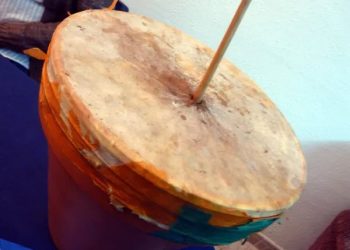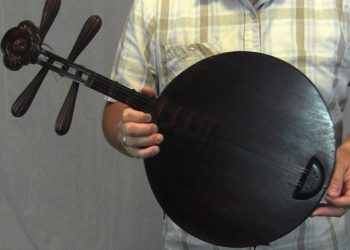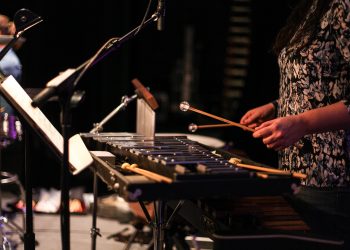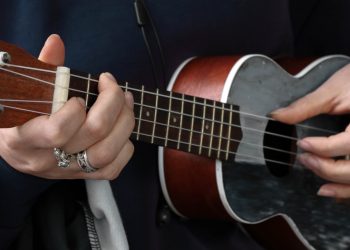Music is a universal language that has the power to evoke emotions, connect people and transcend cultural barriers. One of the fascinating aspects of music is the vast range of instruments that exist. From the traditional instruments to the modern ones, each one brings a unique sound and character to the music. In this article, we will explore the top 14 musical instruments that start with the letter O.
The letter O may not be as common as other letters in the musical instrument world, but it has its fair share of unique and intriguing instruments. These instruments have been used for centuries and have played a significant role in shaping the music of different cultures. From percussion instruments to wind instruments, the O instruments come in a variety of shapes and sizes, producing different sounds and tones.
Whether you are a professional musician or an amateur music enthusiast, this list of O instruments is sure to inspire you. We will take you on a journey through the history and origins of these instruments, their unique features, and the notable musicians who have played them. So, sit back, relax and let us explore the fascinating world of O musical instruments.
1. Oboe
The oboe is another traditional musical instrument that has been played for hundreds of years. It is a woodwind instrument and consists of two parts: the reed, which vibrates when air passes over it, and the body made out of metal or plastic. The oboe produces a unique sound due to its double-reed design; this allows for greater flexibility in tone control than single-reeded instruments such as clarinets or saxophones.
Playing the oboe requires skill and practice but with patience anyone can learn how to make beautiful music on this versatile instrument. Oboists use their fingers to open and close holes in the body while using proper breath support techniques to produce different notes. In addition, they must be able to move smoothly between octaves without losing any quality in their playing.
Oboes are often used in classical music pieces but can also be found in jazz, pop, rock, folk and even electronic genres. This highly expressive instrument is capable of producing an incredibly wide range of sounds from low bass tones all the way up to high soprano notes. Whether you’re looking for a solo voice or just want to add some texture in your ensemble piece, the oboe will always deliver!
With so many possibilities available at one’s fingertips, it’s no wonder why people continue to choose the oboe as their primary musical tool – it truly is one of those amazing instruments that anyone can enjoy learning regardless of experience level!
2. Obonu
The obonu is a traditional instrument from West Africa. It consists of three parts: the body, which is usually made from wood or metal; the sound box, which amplifies the sound; and the strings, which are plucked to produce different tones. The obonu has two distinct features that set it apart from other instruments: its range of high-pitched notes and its ability to sustain each note for longer periods of time.
Playing the obonu requires a special technique known as ‘plucking’. This involves using one’s fingers to create unique riffs by repeatedly striking the strings while also manipulating their pitch with subtle changes in finger pressure. Players must develop an understanding of timing and rhythm in order to be able to play faster passages accurately. Additionally, they need to practice proper breathing techniques in order to maintain a steady flow throughout their performance.
Obonus can often be heard accompanying singers in African music genres such as reggae, Afropop and gospel. In addition, this versatile instrument can lend itself well for use in rock, jazz and even classical pieces – just imagine how beautiful a solo piece could sound with some added texture from an obonu! Its distinctive twang adds complexity and depth to any composition making it an invaluable tool for musicians everywhere.
No matter what style you like playing or what genre you prefer composing in, consider adding the obonu into your musical arsenal – you won’t regret it! With its wide range of sounds and extended sustain capabilities, this wonderful instrument will bring new life and color into your creations so why not give it a go?
3. Ocarina
Moving on, the ocarina is a wind instrument with an equally distinct sound. It has a range of tones available as it can produce notes from four to eight octaves depending on its size and shape. The ocarina consists of two components: the mouthpiece and the body which resemble that of a pot-bellied teapot. To play this instrument you must use your breath and fingering technique – making sure to cover or uncover certain holes in order to hit different pitches.
The ocarina’s unique tone makes it perfect for creating melodic counterpoint parts when combined with other instruments like guitars, drums or keyboards. Additionally, due to its portability, it’s easy to take on the road if you’re planning any performances outside of the studio! Despite being more complex than some stringed instruments such as the obrenten, learning how to control your breath while playing is key – but don’t worry; once mastered you’ll be able to create beautiful solos within no time.
This instrument also lends itself well in genres such as folk music, jazz and world music where improvisation plays an important role. What’s more, thanks to its wide range of sounds available you can explore many musical styles without having to switch up instruments!
Given all these features and advantages, why not try out this wonderful wind instrument today? With enough practice there won’t be anything stopping you from becoming an expert at creating those catchy melodies we love so much!
4. Octaban
The octaban is another interesting wind instrument that has become popular in recent years. It may look like an ocarina, but it’s actually a free-reed aerophone consisting of eight tubes and a single reed. The sound produced by this unique instrument is quite distinct; its range can be expanded with the help of different fingering techniques allowing players to create more complex melodies.
Unlike the ocarina, there are no finger holes on the octaban so you must use your mouth cavity as well as breath control to change pitches. This makes it both challenging and fun for those who want to take their playing skills up a notch! Additionally, due to its size and light weight, it’s easy to carry around if you’re planning any performances outside of the studio or just taking part in jam sessions at home.
Furthermore, this versatile instrument works great when combined with guitars, drums or keyboards – perfect for creating melodic counterpoint parts or catchy solos. With enough practice you’ll soon be able to make beautiful music while exploring many musical styles without having to switch instruments every time you want something new!
All things considered, why not give the octaban a try today? Whether you decide to play alone or join others in some creative improvisation sessions – one thing is certain: mastering such an exciting wind instrument will certainly prove rewarding!
5. Octapad
Building on the concept of a wind instrument, we now turn to the octapad – an electronic percussion pad that uses trigger pads to generate different sounds. In recent years it has become a popular choice among musicians and producers due to its versatility and wide range of features.
The octapad allows you to play any type of drum sound without having to lug around multiple pieces of equipment. It’s also great for those who want to create more complex musical parts as it can be programmed with various beats, rhythms, samples and loops. Plus, its portable size makes it perfect for storing in small spaces or taking on tour!
What really sets the octapad apart is its ability to connect with other instruments like keyboards and DJ controllers via MIDI or USB interfaces. This means you can layer up your performance by adding additional drums or even controlling existing sounds from external sources such as laptops and tablets. With so much potential at your fingertips, there are no limits when it comes to creating unique music experiences!
In short, the octapad is an invaluable tool for modern-day musicians looking for creative ways to express themselves musically. Whether you’re playing solo or jamming out with friends – this incredible device will take your music making skills up several notches!
6. Octavilla
The octavilla is another innovative musical instrument that has recently been gaining traction in the music world. Unlike the octapad, this device uses a grid of strings stretched across a frame to produce sound. It’s essentially an electronic stringed instrument and it can be used to create both melodic and rhythmic patterns.
Unlike traditional guitars or violins, the octavilla gives you complete control over your playing as each string can be individually tuned for pitch and volume. This means you get more versatility when producing sounds and layering up different parts. Plus, its small size makes it perfect for travelling with ease!
One thing that really sets the octavilla apart from other instruments is its ability to connect with other digital devices like laptops and tablets via USB cables. With this setup, you have access to even more creative potential by being able to add additional effects such as looping, reverb and delay – all at the touch of a button!
Overall, the octavilla offers musicians endless possibilities when it comes to exploring their creativity through music-making. From crafting intricate melodies to adding layers of texture – this new tool opens up exciting opportunities for producers looking to take their artistry further than ever before!
7. Octocontrabass Clarinet
The next instrument to explore is the octocontrabass clarinet. An unusual and powerful combination of two distinct instruments, this hybrid creation has been gaining attention in recent years for its unique soundscape possibilities. With a large range spanning nearly four octaves, musicians can create complex passages with ease while also experimenting with lower tones that are not achievable on other instruments.
This double-reed instrument is perfect for those looking to add an extra layer of depth to their compositions or performances. Not only does it provide ample low end presence but it can also be used to evoke a sense of mystery and suspense – something that’s difficult to achieve with more traditional woodwinds. Plus, thanks to its two reeds, players can access additional nuances like vibrato and glissando effects which further enhance the overall sonic experience!
Using the octocontrabass clarinet requires some technique adjustment compared to conventional single-reed instruments such as saxophones or oboes. Its larger size makes fingering much different than what most wind instrumentalists might be accustomed to, so practice is essential if you want to unlock its full potential.
All things considered, the octocontrabass clarinet offers plenty of creative opportunities for modern music makers who wish to expand their repertoire beyond standard classical pieces or jazz improvisations. From atmospheric drones and eerie soundscapes through to avant-garde experimentation – it’s an incredibly versatile tool for any serious musician looking for new ways express themselves musically!
8. Odaiko
Turning our focus to an entirely different sound, we come now to the odaiko. An ancient Japanese drum with a deep and powerful resonance, this large instrument has been used in traditional music for centuries – often taking center stage during festive occasions or spiritual ceremonies. Its round shape gives it a unique tone that stands out from other drums due to its fuller bass quality. The distinct sound of the odaiko can be heard across Japan and beyond – from kabuki theater performances through to modern pop concerts.
The playing technique of this remarkable instrument is as distinctive as its sound. It requires more than just hitting the skin head with sticks; players must also use their hands and arms to apply pressure around the edges of the drum in order to achieve varied tones and textures. This means it takes special skill and finesse to master – something that certainly sets it apart from most western percussion instruments!
The odaiko isn’t just limited to traditional settings either; its versatility makes it perfect for all sorts of musical genres including rock, jazz, blues and even hip-hop. Whether solo or part of a larger ensemble, its impressive presence adds energy and intensity wherever it’s played – making sure audiences are left awe-struck every time!
From commanding low rumble tones through to sharp staccato sounds – there’s no denying that the odaiko is one incredible instrument with endless possibilities. With practice, determination, and creativity any drummer could create truly captivating pieces utilizing this fascinating tool.
9. Oja
Moving on from ogung, another traditional Japanese instrument is the oja. This small flute-like instrument has been used in ceremonies and rituals for centuries, as well as being popular among practitioners of kabuki theater. It’s composed of a hollow bamboo tube with several finger holes – when these are pressed, various notes can be produced that create a soft but melodic sound. The word ‘oja’ literally translates to ‘small voice’, which perfectly describes its gentle yet powerful resonance.
Though it may look simple at first glance, playing oja takes lots of practice and skill before one can master it completely. Its unique design means that different tones can be created by altering the length of each note; even slight changes in fingering or breath control can make a world of difference! With some patience and dedication though, anyone can learn how to play this beautiful sounding instrument – making it perfect for amateurs and professionals alike.
Oja music adds an extra layer to any performance; its delicate and calming sounds provide an ethereal backdrop for dancers or singers, helping bring out their best performances. There’s something magical about hearing someone play this ancient instrument – it transports you to another place entirely! Even those who don’t know much about classical music will appreciate its beauty once they hear it live – making this instrument invaluable for creating unforgettable experiences wherever you go.
No matter what kind of show you’re putting on, adding oja music is sure to take things up a notch – transforming any event into something truly special! From providing peaceful accompaniments through to upbeat rhythms designed to get people dancing, there’s no denying that including this captivating instrument in your repertoire will help ensure everyone leaves happy and contented after an amazing experience!
10. Ojeh
The ojeh is another small flute-like instrument that has been used in Japan for centuries. Making a slightly higher pitched sound than the oja, it stands out with its distinct tone and melodic quality. Like its counterpart, the ojeh consists of a hollow bamboo tube complete with several finger holes – when these are pressed, various notes can be produced to create an enchanting musical experience. Unlike other instruments though, playing the ojeh requires great precision; even slight changes in fingering or breath control will greatly alter the sound created!
Those who take on the challenge of mastering this intricate instrument will find themselves rewarded with an incredibly rewarding experience. Not only does it provide a beautiful accompaniment for singers and dancers, but it’s also perfect for creating uplifting tunes at festivals and gatherings alike! Of course, getting to grips with how to play the ojeh takes time and patience – however once you start understanding its intricacies, there’s no denying that this captivating instrument is worth every moment spent learning it.
Ojeh music adds something special to any performance – from providing peaceful backdrops through to upbeat rhythms designed to get people dancing. Its unique tones can help bring performances to life in ways few other instruments can do – making them ideal for both traditional ceremonies and more modern events! With its delicate yet powerful sound, including the ojeh in your repertoire ensures everyone leaves happy after an unforgettable experience!
Whether you’re looking for calming melodies or lively beats, incorporating ojeh music into your show is sure to make things extra memorable. There’s nothing quite like hearing someone play this ancient instrument – so why not give it a go?
11. Okonkolo
Okonkolo is a percussion instrument created from traditional Cuban and African rhythms. The instrument has become popular in Latin America, Europe, and the United States. It consists of two sticks connected by a rope or string that are held between the palms of the hands and struck together to create an array of sounds. Okonkolo can be used for many different types of music such as Afro-Cuban Rumba, Son Montuno, Salsa, Merengue and more.
The okonkolo was first developed in Cuba during the 1950s when some musicians wanted to combine their traditional drumming with elements of jazz music. They experimented with various materials and eventually came up with what we know today as okonkolo. This new instrument provided them with a unique way to express their musical ideas while still staying true to their cultural roots.
The sound produced by striking the two sticks together varies depending on how hard they are hit and where they land against each other. Different tones can also be created by varying the speed at which you swing your arms back and forth while playing this instrument. Additionally, if desired one can add bells or shakers to further enhance its sound production capabilities.
Using okonkolo requires practice since it is not easy to control but once mastered it adds great depth to any ensemble or solo performance. The distinct sound it produces makes it stand out among other instruments and adds flavor to songs regardless of genre or style!
12. Omele
Omele is a type of percussion instrument that has been used in Africa and the Caribbean for centuries. It consists of two wooden sticks connected by a rope or string, which are played while held between the palms of the hands. The sound produced when the sticks are struck together can vary depending on how hard they are hit and where they land against each other. Omele is often used to accompany traditional African and Caribbean music such as rumba, merengue and salsa.
Unlike okonkolo, omele does not require much practice to produce beautiful sounds. Anyone who has basic hand-eye coordination can easily make music with this unique instrument. One simple technique involves moving your arms back and forth at different speeds while striking the sticks together, creating an array of tones. This creates a lively rhythm that gives any song a distinct flavor!
In addition to its ease of use, omele also offers plenty of opportunities for improvisation. By varying the speed or force of your strikes you can create interesting rhythms that add texture to a piece or even help carry it along entirely on their own – something no other instrument can do quite like omele!
The versatility offered by omele makes it popular among many different genres including rock, pop, reggae and jazz. Its ability to bring out emotion through its distinctive sound adds depth to any ensemble or solo performance – making it truly one-of-a-kind!
13. Ondes Martenot
Having explored omele, let’s now turn our attention to another type of musical instrument – the Ondes Martenot. Developed by French composer and inventor Maurice Martenot in 1928, this keyboard-like device produces sound through a series of oscillators that can be manipulated to create a wide variety of tones. It has been used extensively in classical music as well as popular genres such as jazz, rock and electronic music.
The unique character of the Ondes Martenot lies in its ability to produce both soft and loud sounds with great precision. By using one hand for volume control and the other for pitch manipulation, musicians are able to easily adjust the timbre of their performance. This makes it possible to develop complex melodic lines or simple arpeggios without having to switch instruments. Additionally, its portability allows players to take it anywhere – from home practice spaces all the way up to large concert stages!
The range of tones produced by an Ondes Martenot is unlike anything else out there. In addition to traditional notes, it also produces percussive effects like vibrato and tremolo which can add texture and depth to any piece of music. Furthermore, since each unit comes equipped with two sets of oscillators, performers have access to twice as many sonic possibilities than they would when playing a single instrument.
Finally, due its combination of versatility and simplicity – not only is the Ondes Martenot perfect for experienced professionals but also novices who may want explore new musical directions without getting overwhelmed by complexity. Whether you’re looking for something unique or just want some interesting accompaniment during your next jam session – this remarkable instrument could be exactly what you need!
14. Organistrum
If you’re looking to add a unique twist to your sound, then the organistrum could be just what you need. This ancient stringed instrument has been around since the Middle Ages and is capable of producing some truly captivating tones! As its name suggests, it features not only strings but also an organ-like mechanism which allows performers to control their tone in real time.
The organistrum offers players a great deal of versatility as they can use both hands independently while playing – allowing them to create complex chord progressions with ease. Additionally, this instrument requires minimal effort when compared to other string instruments such as the lute or guitar – making it a great choice for those who are new to the world of music.
Despite its age, the organistrum still remains popular among modern musicians today. Its ability to produce gentle yet powerful melodies makes it perfect for creating beautiful pieces that range from sad ballads to upbeat dance tunes! And if you ever find yourself wanting more variety, simply switch out one of its four strings for something else entirely – giving you access to even wider sonic possibilities.
Whether you’re looking for something classical or contemporary – there’s no denying that the organistrum has plenty of potential. With its combination of traditional design and modern technology, this instrument is sure to bring out your creative side in no time at all!









